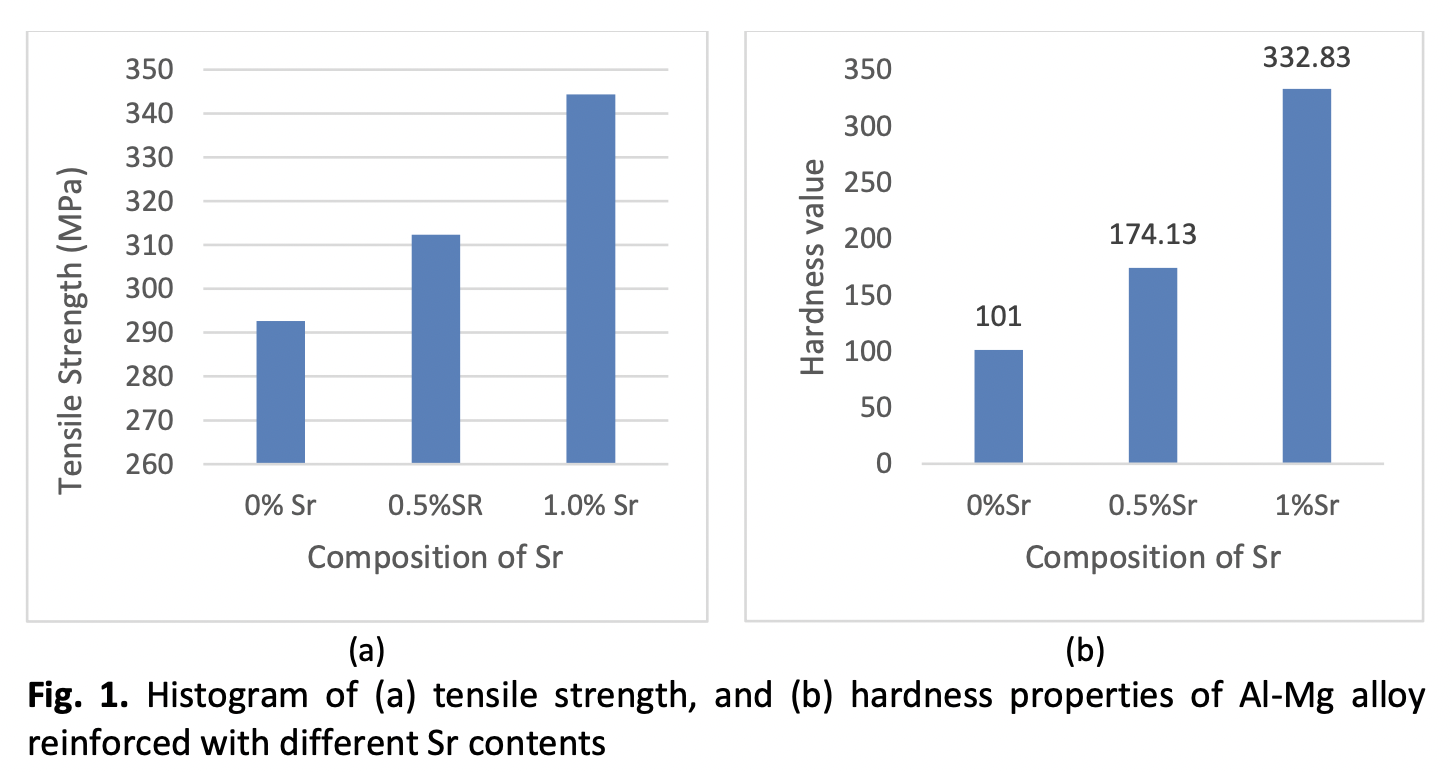Characterization of Aluminium-Magnesium (Al-Mg) Alloy Reinforced with Strontium (Sr) by Casting Technique
DOI:
https://doi.org/10.37934/aram.103.1.2732Keywords:
Aluminium-magnesium alloy, strontium, mechanical properties and corrosion rateAbstract
Aluminium-metal matrix composites (Al-MMCs) are quite attractive due to their low density, ability to be reinforced by precipitation, good corrosion resistance, high thermal and electrical conductivity, and high damping capacity. In this study, the aluminium-magnesium (Al-Mg) master alloy was reinforced with 0.5 to 1.0 wt% strontium (Sr) by casting technique. Then, the Al-Mg-Sr composite alloy was characterised by its mechanical properties and microstructure characterization. An Instron tensile machine and a Vickers hardness tester were used to determine the tensile strength and hardness of the Al-Mg-Sr composite alloy. The Gamry potentiometer electrode was used to determine the corrosion rate of this composite alloy. From the results, increased Sr content increases the tensile strength and hardness of the Al-Mg alloy. Field emission scanning electron microscope (FESEM) results show that the synthesised composite alloys have a uniform distribution of reinforcement, which tends to be fine and associated with a clean interface with the metal matrix. X-ray diffraction (XRD) analysis confirms that only the elements Al, Mg, and Sr were detected during characterization. The morphology shows that the particles of the Sr phase have a dendritic structure. In the corrosion test with the Gamry potentiometer electrode, Al-Mg with a composition of 1.0 wt% Sr showed the best results in terms of corrosion rate compared to cast Al-Mg with 0.5 wt% and the Al-Mg alloy itself. All the summarised results show that Al-Mg alloy composites containing different weights of Sr phase were successfully fabricated and the particles were uniformly distributed in the matrix of the composites.
Downloads



























